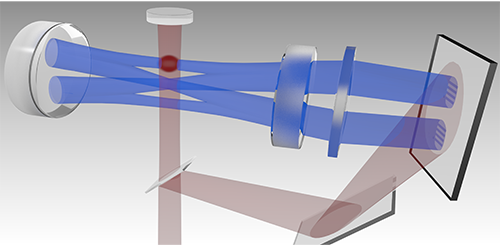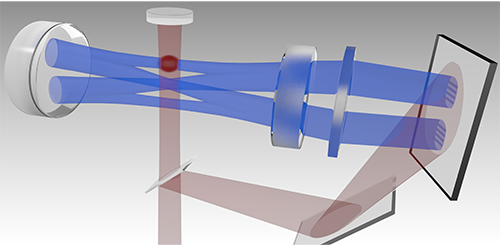A Step Toward Simulating Spin Glasses
Atomic condensates in an optical cavity can potentially be used to simulate various quantum systems. One of these—an exotic magnet known as a spin glass—comprises a network of interacting particles, each of which can take one of two spin states. Now, researchers are a step closer to simulating these interactions. Yudan Guo at Stanford University, California, and colleagues have shown that two Bose-Einstein condensates (BECs) in a cavity can organize themselves into either of two possible states, which could stand in for the two spin states in a spin glass.
The team confined two BECs in a cavity and pumped them with a laser, causing the atoms in each BEC to scatter pump photons into the cavity. By exchanging momentum via these cavity photons, each BEC changed from having a simple density maximum at the atomic cloud’s center to having a density that oscillated in space in two perpendicular directions. These multiple density peaks formed a sort of “checkerboard” pattern. The relative positions of the BECs, which the researchers controlled with optical traps, determined whether the density-wave patterns in the two clouds had the same or opposite phase.
With control over the BEC-BEC interaction, Guo and colleagues say that researchers could simulate a frustrated system such as a spin glass by confining three or more BECs in the cavity. In this case, the phase of the density-wave pattern would emulate particle spin, with the system arranged so that no configuration could satisfy every condensate’s phase preference simultaneously.
This research is published in Physical Review Letters and Physical Review A.
–Marric Stephens
Marric Stephens is a freelance science writer based in Bristol, UK.





